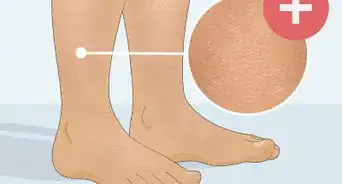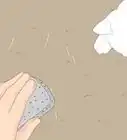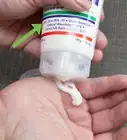This article was co-authored by Mohiba Tareen, MD. Mohiba Tareen is a board certified Dermatologist and the founder of Tareen Dermatology located in Roseville, Maplewood and Faribault, Minnesota. Dr. Tareen completed medical school at the University of Michigan in Ann Arbor, where she was inducted into the prestigious Alpha Omega Alpha honor society. While a dermatology resident at Columbia University in New York City, she won the Conrad Stritzler award of the New York Dermatologic Society and was published in The New England Journal of Medicine. Dr. Tareen then completed a procedural fellowship which focused on dermatologic surgery, laser, and cosmetic dermatology.
There are 18 references cited in this article, which can be found at the bottom of the page.
wikiHow marks an article as reader-approved once it receives enough positive feedback. In this case, several readers have written to tell us that this article was helpful to them, earning it our reader-approved status.
This article has been viewed 553,913 times.
Cracked skin happens usually when our skin becomes way too dry. As our skin dries, it loses flexibility and the pressure of everyday use causes it to crack. These cracks can be painful but they're also a giant beacon for infections. It's important to treat cracked skin before you end up with a much more serious health problem.
Steps
Treating the Skin
-
1Check for infections. You should start by checking for signs of infection. If the area is swollen, releasing pus or blood, or is very tender and painful, you should go immediately to your doctor or local health clinic. Skin cracks are very prone to infection and these infections require professional treatment.[1]
- If you do not have health insurance (and you live in the US), go to the official listing of clinics for low income individuals. You should be able to find a clinic which will scale your bill to the amount of money you have available.
-
2Soak your skin with a disinfectant.[2] Start treatment of basic cracks by soaking your skin. Sanitize a bowl, bucket, or tub and then fill it with warm (not hot) water. You'll then want to pour in a little apple cider vinegar to help disinfect your skin.[3] Use about 1 cup per gallon of water. Disinfecting will help cut down on chances for the cracks to become infected.Advertisement
-
3Gently exfoliate. Using a clean washcloth, gently rub the affected area. This will remove dead skin cells and allows the products you'll place on your skin to absorb better. Be sure to be gentle and that the washcloth you use is clean.[4]
- Once you've healed the cracks, you can use more aggressive forms of exfoliating but this should not be done more than once a week. Your skin is sensitive and needs to be treated carefully.
-
4Apply a layer of moisturizer. Give your skin a final rinse and then apply a layer of moisturizer. You'll want to lock in the moisture that your skin received with the soak, or else you risk drying out your skin even more.[5] [6]
- We recommend a lanolin product but you'll find other recommendations in the next section.
-
5Apply wet dressings overnight. If you have time, such as if you can treat your skin overnight or on a weekend, wet dressings may help heal the skin and can at least provide you with greater comfort.[7] Wet dressings consist of a moist layer of fabric covered by a dry layer. So, for example, let's say your feet are cracked. Wet a pair of socks and then wring them so they don't drip. Put those on and then cover with dry socks. Sleep like this overnight.
- It is important not to do this if you suspect the cracks are infected, since this can make the infection worse.
-
6Apply bandages during the day. For treatment during the day, fill the cracks with liquid or gel "bandage" product, or at least with an antibiotic product like Neosporin. You can then cover the area with a protective cotton surgical pad and wrap with gauze. This should reduce pain and speed up the healing process.[8]
-
7Keep the area clean and protected until the cracks heal. Now you just have to be patient while the cracks heal. Be sure to keep the affected area clean and covered, to prevent further irritation. If the cracks are on your feet, wear socks which are clean and change them at least once (if not twice) a day until the cracks heal. If the cracks are on your hands, wear gloves when you're outside and for activities like washing dishes.
Maintaining Moisture
-
1Make a long term moisturizing routine. Once you've started to heal the cracks in your skin, your best bet is to start a long term routine to prevent more cracks. Unfortunately, this is a skin problem that is better to focus on preventing then on fixing once it occurs. Whatever moisturizing routine you use, just make sure that it's something you can keep up long-term and use regularly, since this is the best way to prevent future issues.
-
2Find a lanolin cream. Lanolin, which is a wax-like substance made from wool-producing animals, is nature's best way of protecting skin. Used consistently, you should be able to apply it every other day or every third day and still see the same soft skin. When you first start using it, apply it liberally at night and give it time to soak into your skin.[9]
- Bag Balm is the most common brand of lanolin product in the US and can be found at most drug stores.
-
3Look for the right ingredients in other moisturizers. If not using lanolin, you'll want to analyze what moisturizing products you do buy. You'll want products with the right kinds of ingredients, to guarantee that you get the right effect. Many moisturizers will include lots of natural, healthy sounding ingredients but they won't actually help your skin very much. You'll want to instead look for these in the ingredients list:[10]
-
4Apply a light layer directly after bathing or soaking. Every time you bath or expose your cracked skin to water, you're washing away natural oils which protect your skin. Apply at least a light level of moisturizer after every shower, as well as any time you soak your feet.[13]
-
5Apply a thick layer of moisturizer at night. If you can, apply a thick layer of moisturizer before going to bed at night. This will give your feet time to really soak all of that healing product in, while making sure that you're not bothered by squishy skin. Cover your skin thickly in moisturizer and then put on a layer to protect the moisturizer while it soaks in.[14]
- If the cracks are on your feet, use socks. If the cracks are on your hands, use gloves.
Controlling the Problem
-
1Check for health problems. There are many health problems which can cause severely dry skin like this. You might want to evaluate your health and make sure none of these problems are affecting you. If you are suffering from a larger condition, it's important to treat it before the cracks reappear and become infected...or before other, more dangerous symptoms come up.[15]
- Diabetes is one common example of an illness which can cause severely dry skin in the extremities.[16]
- Talk to your doctor for help in figuring out if you have outside health factors.
-
2Avoid removing your natural oils. Your body will naturally produce oils which help protect your skin and prevent cracks. However, an incorrect bathing routine can strip your skin of these natural oils and put you at risk. Mostly you'll want to avoid harsh soaps and hot water, since both will send your body's oils running.[17]
- If you soak your feet, don't use soaps in the water. Generally you want to avoid soap on sensitive skin, like your feet. Water and a washcloth should be more than enough to get them clean.
-
3Protect your skin from the elements. When the air gets really cold, it also dries out. The area you live in might also be naturally dry. This dry air, draws moisture out from your skin naturally. Protect your skin from drying out by evening out the moisture in the air or by protecting your skin. Place a humidifier in your home or office and wear socks and gloves when you go outside.[18]
- You skin should also be protected from the sun, which can create damage and dryness over time.
-
4Change your shoes. If the cracks you experience are mainly on your feet, you might want to take a look at your shoes.[19] Shoes with open backs and poor padding can lead cracks to form by putting too much pressure on already sensitive skin. Use closed shoes and make sure they're very comfortable.
- Switch to jogging shoes or at least use insoles to protect your feet from pressure.
-
5Drink more water. Dehydration can definitely make your skin more prone to being dry and when you combine it with improper washing and a dry environment, it's a recipe for cracked skin.[20] Drink plenty of water each day to keep your body properly hydrated.[21]
- How much is the right amount depends on the individual person. Generally, if your pee is pale or clear, you're getting enough. If it's not, you need to drink more water.
-
6Get proper nutrients. Your skin needs lots of vitamins and nutrients in order to keep growing in healthy. You can make some improvements to the quality of your skin by making sure that nutrient deficiency is not the source of your problem. Get lots of vitamin A, vitamin E, and omega 3 fatty acids, to help your skin get what it needs to be healthy.[22]
- Good sources of these nutrients include: kale, carrots, sardines, anchovies, salmon, almonds and olive oil.
-
7Evaluate your weight. Obesity and excess weight are commonly attached to conditions of severely dry skin. If you find yourself unable to beat this dry skin problem and no outside health factors are in play, you will want to consider trying to lose weight. Remember that this cracked skin poses a serious risk of infection: while the problem might seem small, it can actually be very dangerous and you shouldn't dismiss the problem.
-
8Talk to your doctor. Again, if you are ever concerned because the cracks won't go away or because they're infected, please see your doctor or go to a clinic. This is a common problem and there are many solutions available. You doctor should be able to help you figure out if this is a problem you can beat with a routine, or if medication will be needed to help prevent infections.
References
- ↑ https://www.webmd.com/skin-problems-and-treatments/eczema/eczema-heal-cracked-skin
- ↑ https://www.webmd.com/skin-problems-and-treatments/eczema/treatment-16/eczema-hands-feet
- ↑ https://doctor.ndtv.com/living-healthy/heres-what-happens-when-you-soak-your-feet-in-apple-cider-vinegar-1801807
- ↑ https://www.aad.org/public/skin-hair-nails/skin-care/exfoliation
- ↑ https://www.aad.org/public/skin-hair-nails/skin-care/dry-skin
- ↑ Mohiba Tareen, MD. Board Certified Dermatologist. Expert Interview. 26 March 2020.
- ↑ http://www.nationwidechildrens.org/eczema-wet-dressings
- ↑ https://www.webmd.com/skin-problems-and-treatments/eczema/eczema-heal-cracked-skin#2-5
- ↑ https://www.webmd.com/drugs/2/drug-8944/lanolin-topical/details
- ↑ http://www.webmd.com/beauty/skin/prevent-soothe-chapped-winter-hands?page=2
- ↑ Mohiba Tareen, MD. Board Certified Dermatologist. Expert Interview. 26 March 2020.
- ↑ Mohiba Tareen, MD. Board Certified Dermatologist. Expert Interview. 26 March 2020.
- ↑ Mohiba Tareen, MD. Board Certified Dermatologist. Expert Interview. 26 March 2020.
- ↑ https://www.mayoclinic.org/diseases-conditions/dry-skin/diagnosis-treatment/drc-20353891
- ↑ https://www.mayoclinic.org/diseases-conditions/dry-skin/symptoms-causes/syc-20353885
- ↑ http://www.everydayhealth.com/foot-health/cracked-heels.aspx
- ↑ https://www.aad.org/public/skin-hair-nails/skin-care/dry-skin
- ↑ https://www.mayoclinic.org/diseases-conditions/common-cold/in-depth/humidifiers/art-20048021
- ↑ http://www.dermnetnz.org/scaly/cracked-heels.html
- ↑ https://my.clevelandclinic.org/health/diseases/16940-dry-skinitchy-skin
- ↑ https://www.webmd.com/diet/features/6-reasons-to-drink-water#2
- ↑ https://www.webmd.com/beauty/nutrients-for-healthy-skin
About This Article
Before you try to heal cracked skin on your feet, check the cracks for signs of infection like swelling and puss, and get medical attention if you see any. If the cracks aren’t infected, clean them by soaking your feet in a mixture of 1 gallon of warm water and 1 cup of apple cider vinegar. Then, apply a lanolin-based moisturizer immediately after the soak to lock in the moisture. During the day, fill the cracks with Neosporin and wrap them in cotton pads and gauze. For long-term solutions, including a moisturizer routine and lifestyle changes, scroll down!

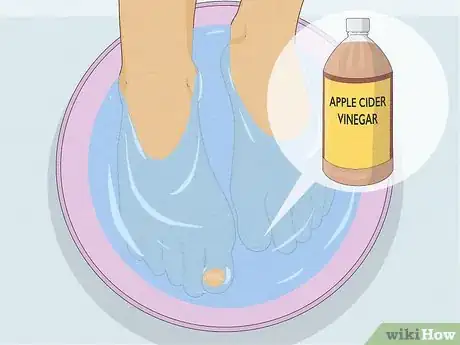



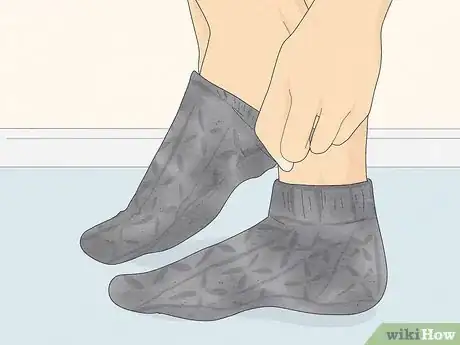
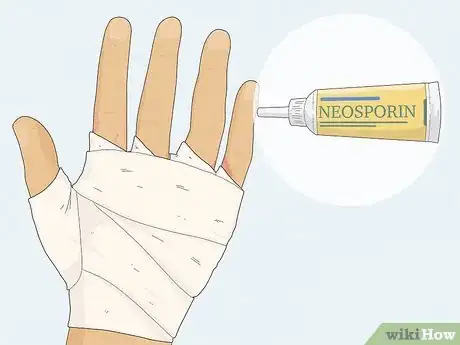
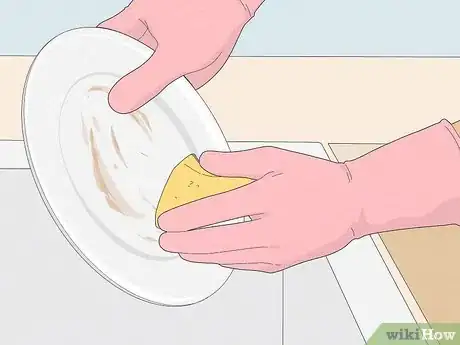
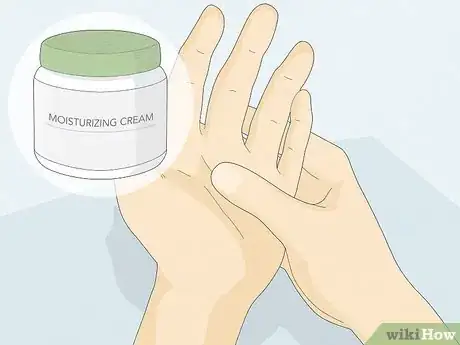

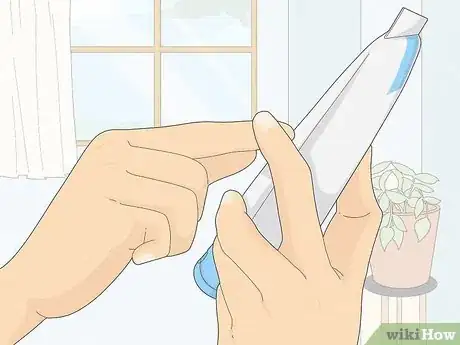
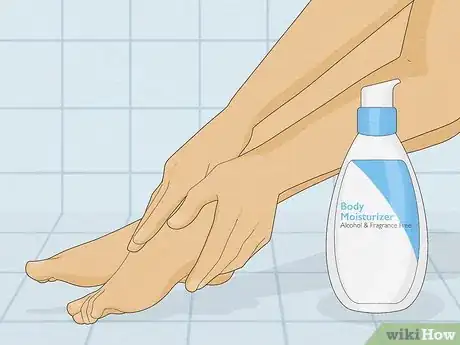
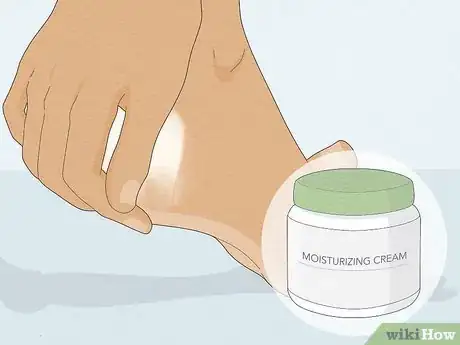
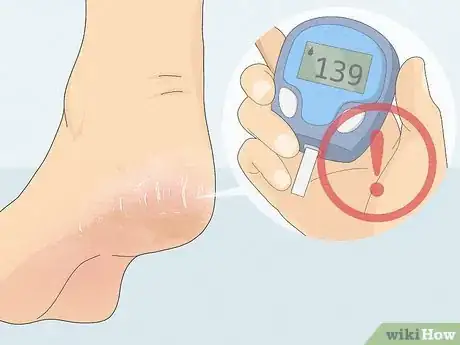
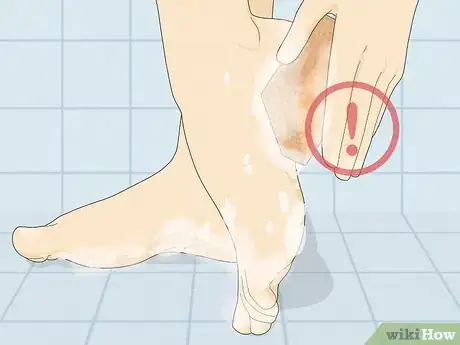
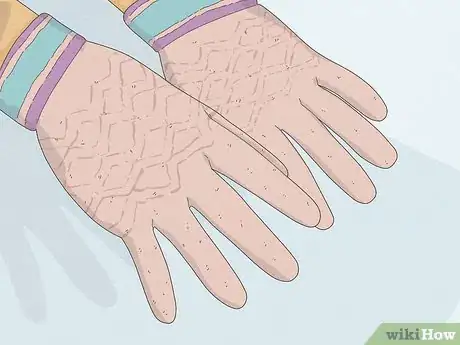
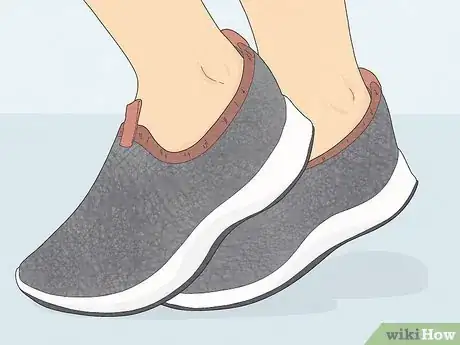
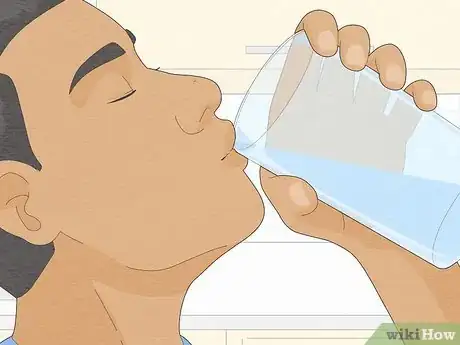

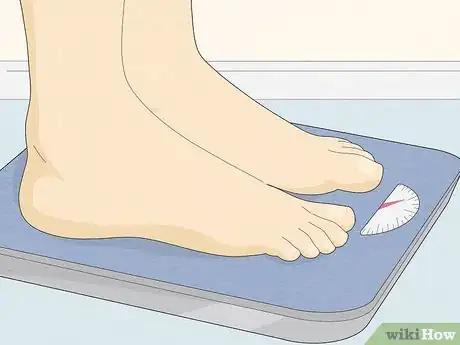
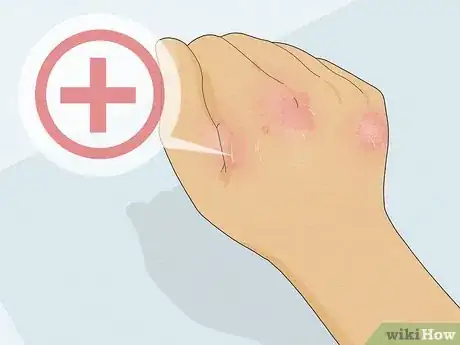



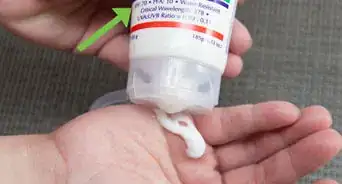
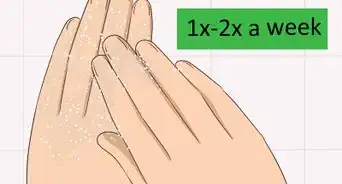

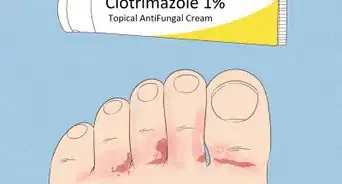
-Step-8-Version-3.webp)

